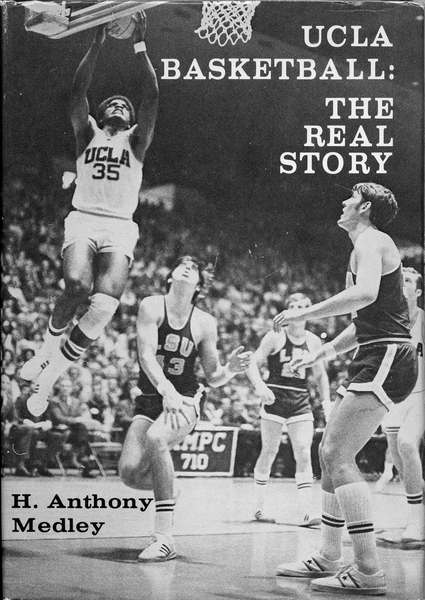|
Out of print for more than 30 years, now available for the first time as an eBook, this is the controversial story of John Wooden's first 25 years and first 8 NCAA Championships as UCLA Head Basketball Coach. This is the only book that gives a true picture of the character of John Wooden and the influence of his assistant, Jerry Norman, whose contributions Wooden ignored and tried to bury. Compiled with more than 40 hours of interviews with Coach Wooden, learn about the man behind the coach. The players tell their stories in their own words. Click the book to read the first chapter and for ordering information. Also available on Kindle. |
|
Sports Medley Baseball Needs to Come Into the 21st Century by Tony Medley On July 22, the Dodgers lost a game when a checked swing by the Giants’ batter with two out and two strikes on the batter in the 9th inning was called not a swing and therefore not a strikeout. With a second chance, the Giants came back to win the game. On October 14, the Dodgers won the playoff series after first base umpire Gabe Morales ruled that the Giants’ last hitter’s (Wilmer Flores) checked swing was a swing and the game was over. Who was right? Was the July 22 attempt a swing or not? Was the October 14 attempt a swing or not? Lots of controversy here, but don’t look to baseball rules to resolve it because, believe it or not, there is no baseball rule that defines when a swing is, in fact, a swing at the pitch. Is it if the batter breaks his wrists (as former Baltimore Oriole/California Angels second baseman Bobby Grich told me he thought it should be)? Is it if the bat crosses the plate (as I think it should be)? Who knows? Because baseball does not define it. However, under either interpretation, Grich’s or mine, Flores’s checked swing was not a swing. He did not break his wrists and his bat did not cross the plate. Baseball should correct this in vestigio, and define when a swing is a strike and when it isn’t. But that’s not all. In a game called by Vin Scully “the most important game in the history of their rivalry,” it should not be ended on a call like this. It was a reprehensible ending to a game for the ages, miles apart from Bobby Thomson’s iconic 1951 home run. Baseball should come out of the dark ages. In addition to defining when a swing is a swing, it should immediately institute the electronic calling of balls and strikes. The umpire’s call of pitches is the most important part of the game. The entire game depends on it. It is imminently unfair for a pitcher to make a terrific pitch that catches the corner, and have it called a ball; it is equally unfair for a batter to take a pitch that is a skosh outside and have it called a strike. There is a huge difference when a pitch on a 2-1 count is called wrong because of the difference between a count of 3-1 (a batter’s pitch) and 2-2 (a pitcher’s pitch). When the umpire gets it wrong it affects the game and is unfair to both the batter and the pitcher. The plate umpire is in the worst position possible to make some of these calls. He can’t even see the pitch cross the plate on some of the low pitches, so it’s a guess. The proper placement for an umpire to call balls and strikes is behind the pitcher, which is where the umpire stood at the dawn of baseball. But even that position isn’t as accurate as the electronic calling of balls and strikes. The argument that one of the nice things about baseball is that umpires’ decisions might be wrong; “that’s baseball” they say. Nonsense! Get it right! Finally, the call of the checked swing is not subject to review. That makes sense because it is totally the umpire’s judgement since there is no definition in the rules. If it were defined, as either the breaking of the wrists or the bat crossing the plate, or either, then it could be reviewed and gotten right. I conclude with the analogy to tennis, which has instituted electronic line calling. It’s a much better game, even though fans loved the controversy when people like John McEnroe would rant and rave over bad line calls, “You cannot be serious!” I say to baseball when it refuses to make sure the calling of balls and strikes is as accurate as possible, “You cannot be serious!”
|
|
|
